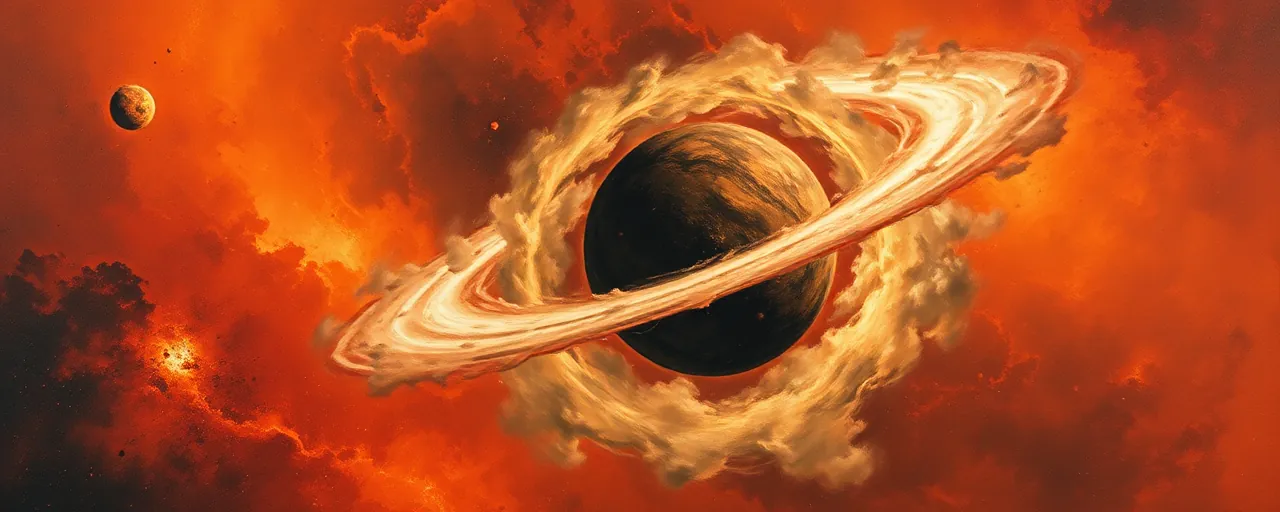A Cosmic Collision Caught in Action
A flash of light from a distant star 12,000 light-years away has turned heads among astronomers. NASA’s James Webb Space Telescope recently zeroed in on an event that rewrites the story of how planets meet their end. What was first thought to be a star swelling up to swallow a planet turned out to be something entirely different, a revelation that came out of nowhere and stunned researchers.
The star, nestled in the crowded expanse of the Milky Way, flared briefly in 2020, sparking curiosity. Early observations from ground-based telescopes hinted at a familiar tale, an aging star bloating into a red giant and gobbling up a nearby planet. But Webb’s sharper gaze flipped that idea on its head, showing a planet spiraling inward to its doom instead. It’s a rare glimpse into a process that might one day play out closer to home.
Unpacking the Evidence
Two of Webb’s high-tech tools, the Mid-Infrared Instrument (MIRI) and the Near-Infrared Spectrograph (NIRSpec), dug into the aftermath. Researchers found a ring of hot gas and a spreading cloud of cooler dust around the star, signs of a violent end. The data pointed to a Jupiter-sized planet that had drifted too close, its orbit shrinking over millions of years until it plunged into the star’s fiery grasp.
Ryan Lau, an astronomer at NSF NOIRLab in Tucson, led the team behind this discovery. He noted that pointing Webb at this event was a gamble, given how little they knew going in. What they found defied expectations, the star wasn’t a puffed-up red giant after all. Instead, its brightness and surroundings suggested a different fate, one where the planet’s plunge stirred up the chaos they observed.
A Slow Dance to Destruction
Picture a planet orbiting nearer than Mercury does to our Sun, grazing its star’s atmosphere over eons. Morgan MacLeod, a researcher from the Harvard-Smithsonian Center for Astrophysics, described how this slow spiral turned into a rapid plunge. As the planet smeared across the star’s surface, it kicked out gas that later cooled into dust, leaving behind a faint blue haze and a surprising twist, a disk of molecular gas rich with carbon monoxide.
This wasn’t the debris researchers anticipated. Colette Salyk from Vassar College admitted the findings caught her off guard, revealing features that echo regions where planets form, though no new worlds are taking shape here. The mix of dust and gas offers a snapshot of what happens when a planet dissolves into its star, raising fresh questions about how these events reshape stellar neighborhoods.
Broader Views on Planetary Endgames
Astronomers have long tracked how planets and stars interact over vast timescales. Tidal forces, gravitational tugs, and leftover dust from planet-forming disks can nudge worlds into perilous orbits. Studies of other systems show engulfment can leave chemical fingerprints on stars, boosting heavy elements in fewer than one in five Sun-like cases. This event, dubbed ZTF SLRN-2020, stands out as the first caught mid-act, offering a front-row seat to a cosmic finale.
Beyond this single star, the discovery ties into bigger puzzles. Infrared tools like Webb and upcoming projects, such as the Vera C. Rubin Observatory, aim to spot more of these fleeting dramas. International teams, pooling expertise from NASA, the European Space Agency, and the Canadian Space Agency, drive these efforts, piecing together how planetary systems evolve and, sometimes, fall apart.
What It All Means
This observation, detailed in The Astrophysical Journal on April 10, marks a turning point. It’s not just about one star and its lost planet; it’s a window into the fates awaiting countless systems across the galaxy. Lau hopes this is the first of many such catches, a chance to decode the life cycles of stars and their companions with unprecedented clarity.
For those pondering Earth’s distant future, the event stirs reflection. Billions of years from now, our Sun will age and expand, but this new evidence suggests other endings are possible too. Planets might not always wait for their stars to reach out; some could drift inward on their own, meeting a fiery end that leaves behind dust and questions for whoever’s watching.
